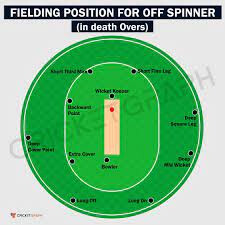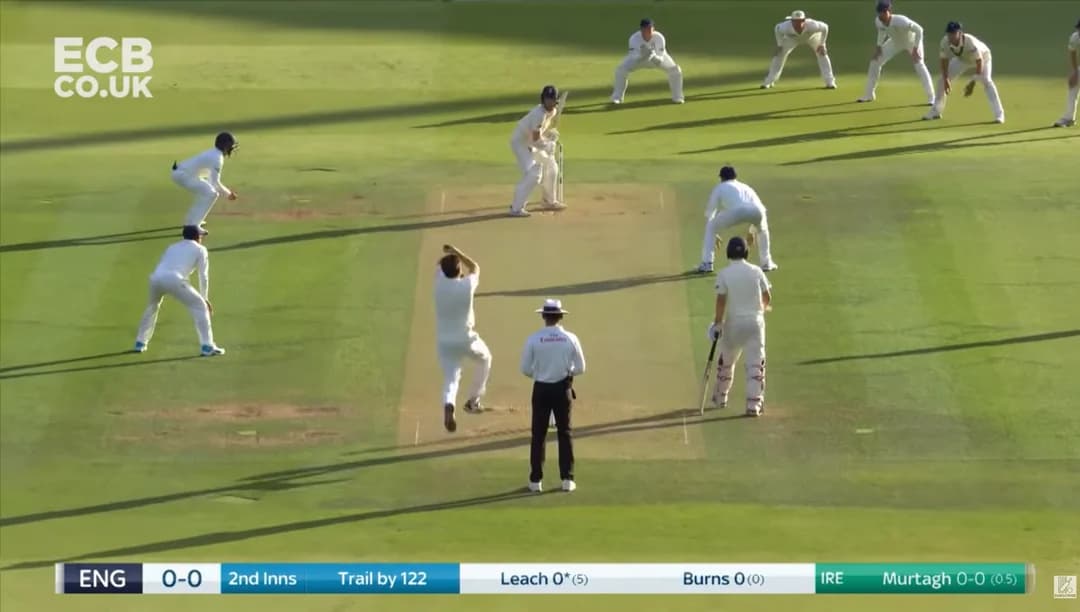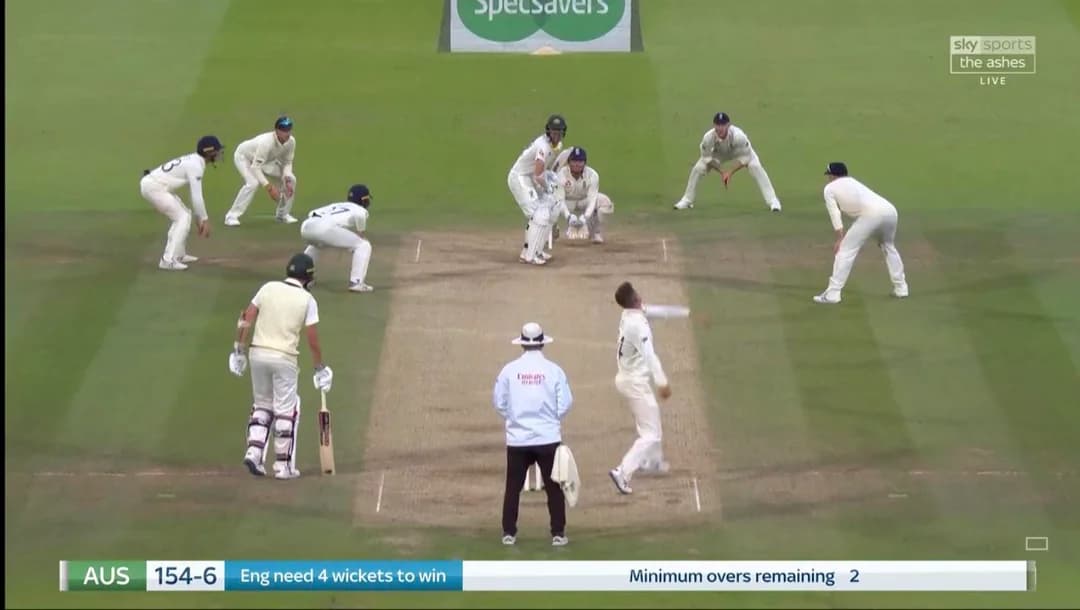USA lost but they made India work hard chasing a smallish total on the field. As a result, their net run rate isnt too bad, which means that even a narrow loss to Ireland is probably enough for qualification to the super-8s aka the playoffs!
If I’m understanding how this works, they are in very big trouble with a loss to Ireland.
Pakistan’s NRR is already better than USA’s, so if USA loses to Ireland and Pakistan beats Ireland, Pakistan will be ahead of USA no matter what the margins of victory are.
As I see it, USA has 3 tickets in:
- Beat Ireland
- Either USA/Ireland or Pakistan/Ireland get rained out
- Ireland beats both USA and Pakistan, but doesn’t get enough of an NRR boost to overtake USA for 2nd.
Somebody let me know if I have this wrong.
This is correct
Australia played England in long form cricket last year and beat them in slightly unusual circumstances (something equivilent to a fake QB slide, or any other rule that is legal but perhaps not entirely ethical).
If Australia lose to Scotland England are now. So we have the potential to do the funniest thing ever…
You are correct, I misread a badly written news article and thought the NRRs were the other way around.
That said, it’s been raining buckets down in south Florida.
FUCK YEAH AMERICAN RAIN
Nepal run out by inches on final ball against South Africa. Would’ve forced a super over.
Who was favored in the match? I’m assuming Ireland?
Betting odds were about 60/40 for Ireland.
lol at Zimbabwe having lost to this Uganda team.
Way more of a plumbers vs pros matchup than USA/Pakistan.
Yeah the continental splits are a bit silly. Netherlands got in automatically this time because of a late win which meant all of Ireland/Scotland/Netherlands got to play. Would be a shame to have them miss out.
I would be getting rid of the auto-qualification for high ranked non-top 8 sides and making NZ SL etc… battle it out with others in world qualifers not regional.
Qualifying for these just seems like another example of money meaning we can’t have nice things.
I get the schedule for England et al is full but they should have to play Scotland and Ireland in competitive matches every once in awhile just for growth of the sport. Same with West Indies and USA and Canada (and Bermuda, Bahamas come on pretty mama). Give the dominant countries byes to the final round of qualifying or whatever but at least give them a chance to fail.
Are the strategies and gameplay for T20 any different than for the traditional rules game?
Yeah, for sure. The shorter form encourages more aggressive batting and running since the consequences for an out arent as high. The defenses are more aligned to prevent runs than they are to take wickets.
Short answer, yes. Incredibly different strategies and a lot of players are specialists in one or two of the three formats.
There are three forms of cricket with T20 being the newest version (not cricket according to a lot of olds).
Test cricket (the traditional form) lasts five days and each team bats two innings. Each inning is only limited in time by teams having ten outs.
After the end of the fifth day the match is over. To use baseball terms, if the team in the bottom of the 2nd hasn’t scored the winning run and still has outs at the end of day five the game is a draw regardless of if one side dominated. (This often happens due to rain)
The team that is “in the lead” will sometimes voluntarily declare their innings to be over to save time. Basically they scored enough runs that they are confident they can’t lose so their only concern is having enough time to get the other team out. It’s common for the team in the “bottom of the second” to know they can’t win and just hope to hang on for a draw by avoiding losing ten outs (a lot easier said than done).
Strategically this format is why you may have heard that the batting team is “playing defense”. This is because typically teams want their inning to last a full day or longer. The batting is far less aggressive. Batters are defensive and look to score runs off of “loose deliveries” rather than looking to smash every ball.
There is no World Cup for test matches and traditionally there‘s never been any competition beyond countries playing two to five match series (occasionally just one) as part of a “tour” against another country. Since 2019 there’s been a World Test Championship where each test match contributes to standings over two years and then #1 plays #2 in one test match for the title.
The middle format that came about in the 1970s, because gambling is fun, is One Day Internationals. These last 6-7 hours and each team bats for one inning.
Teams bat for a maximum of 50 overs (300 deliveries) in addition to having ten outs. Typically teams are pretty defensive in their batting until the final ten overs.
T20 is the new version and it requires teams to be far more aggressive in their batting, although this World Cup has seen far lower scores than is typical. Teams bat for 20 overs (120 deliveries) and have ten outs so teams often have to be aggressive from the start.
In test matches strike rates (how many runs vs how many chances you get to face a delivery and score) don’t really matter. But anything around 50 runs for 100 balls faced is pretty good.
in 50 over games you want to be batting at about 1 run per 1 ball faced for the top part of the innings, and about 2 runs per ball for the last 20% of the innings.
In 20 over games, you want to be batting at 150 runs per 100 balls plus (150SR) anything less is an ineffecient use of resources (finite number of deliveries to make runs, better to get out aggressively than to dawdle).
Imagine baseball having a 100 pitch per team limit for matches. You would see a lot less taking walks and getting on base/deep counts and more attempts for home runs, even if they end up being fly outs to right field.
So in test matches, it’s defensive batting and aggressive pitching (since outs are hard to come by), whereas in T20 it’s aggressive batting and less aggressive pitching because a ball bowled for no runs in test matches is neutral but it’s kinda good with only 120 balls?
Is that roughly correct?
Yep.
In Test matches the fielders are set up in a very attacking manner. Very close to the batter or in a position to catch a ball that just grazes the edge of a bat and goes behind (think a foul ball in baseball)
THis is a standard fast bowler/pitcher field in a test match. A few behind the bat for thin grazes.
For slow bowlers/spinners more fielders are close to catch anything that bloops off the bat when a defensive shot/bunt is played for safety.
The closer to the end of the 5 days, the more extreme the fields get to chase a result.
In limited overs/pitches matches, fielders are more often in the outfield to catch flyballs/keep scores to only 1 run at a time. But teams are limited with how many they can put outside the mini-rings/the small dots around 30 yards from the batter. In the first 6 overs of these games its 2 outside, after that its 5.

Generally speaking it’s absolutely correct.
In test matches you’ll see a lot of fast bowlers aiming for the ball to go just a few inches above and to the side of the wicket on the opposite side of the batter. Close enough to the stumps that the batter feels they have to put the bat out to protect but a bit outside so that the ball hopefully will nick the edge of the bat and be caught out.
You’ll usually have a few fielders placed to the side of the wicketkeeper called slips who are in place to catch those balls.
You do see that in T20s but it’s when the fielding team desperately needs to take wickets, feels there is a batter struggling to read deliveries or it’s a huge mismatch.


